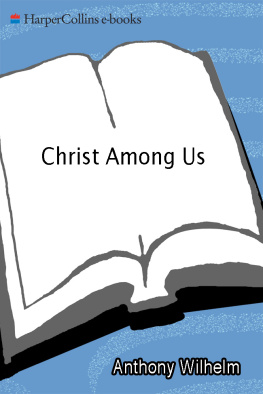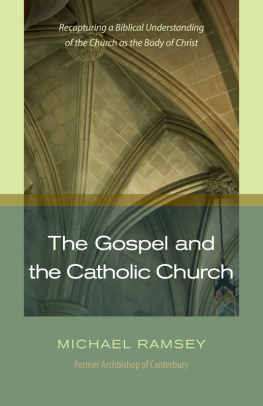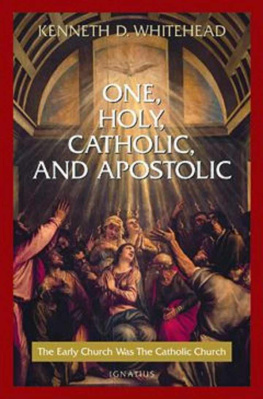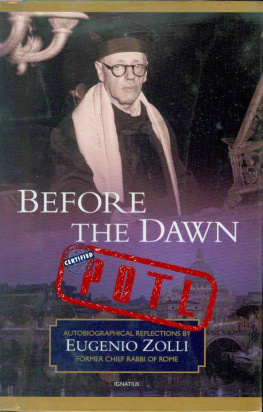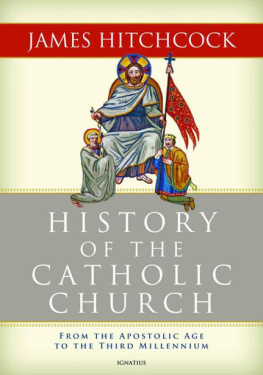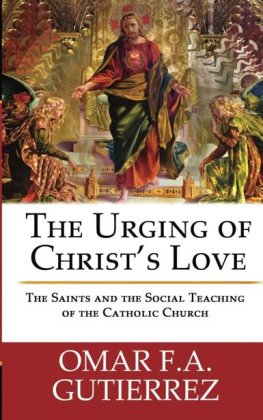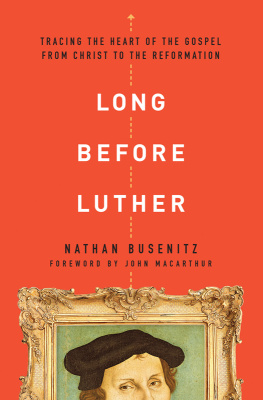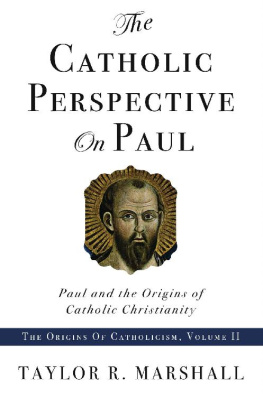The Eternal City
Rome and the Origins of
Catholic Christianity
Taylor R. Marshall, Ph.D.
Origins of Catholic Christianity Trilogy
Volume Three

Saint John Press
MMXII
Copyright 2012 Taylor Reed Marshall, Ph.D.
All Rights Reserved. No part of this book may be reproduced or transmitted in any form or by any means, electronic or mechanical, including photocopying, recording, or by any information storage and retrieval system without the permission in writing from the publisher or author.
Sacred Scripture citations generally from the 1899 edition of the Douay-Rheims (Challoner) Bible, or based upon it.
Please visit The Eternal City on the web at:
www.taylormarshall.com
Dedicated to my beloved children. I love you all dearly. I pray for you daily. Please pray for meand please remember me at the altar after I die.
Behold the inheritance of the Lord are children: the reward, the fruit of the womb. As arrows in the hand of the mighty, so the children of them that have been shaken. Blessed is the man that hath filled the desire with them; he shall not be confounded when he shall speak to his enemies in the gate.
Psalm 126, D-R
As long as the Coliseum stands,
Rome shall stand.
When the Coliseum falls,
Rome will fall.
When Rome falls,
the world will fall.
Saint Bede the Venerable
A.D. 673735
And both the city and her lands, in truth
were established as the place of holiness
where the successors of great Peter sit.
Dante Alighieri
Inferno II, 22-24
Contents
Acknowledgements
I must chiefly acknowledge my beloved spouse for her constant encouragement and love. Joy is truly my joy. I am also grateful for my children who remind me of the reasons for which I write.
My thanks are due to all of my professors, teachers and mentors.
Charles Page edited the manuscript beautifully. His hand is on every page. Jonathan Deane also made excellent last-minute additions. This book would not be what it is without him. Thank you Charles. Steven Nelson did a wonderful job creating the cover art for this book and the previous two volumes of the Origins of Catholicism trilogy.
A special thanks to John Boyden who was my very first Catholic guide to the Eternal City in 2006. Many of the things he showed me found their way into this book.
I would like to thank President of Fisher More College Michael King , along with the Board of Visitors of Fisher More College for their support, namely Paul Check, Robert Drumm, Daniel & Bettina Hennessy, Lois Kapp, William & Elizabeth Mitchell, Lynne Thomas. I am grateful to my colleagues at the College, especially Judith Shank, Karl Strauch, Jared Goff, Joseph Reidy, and Albert Doskey.
My thanks are also due to Bishop James Conley, Bishop Kevin Vann , Scott Hahn , Dave Palmer at Guadalupe Radio, Matthew Swaim, Brent Stubbs, Matthew Levering , Jordan Low, Marcus Grodi, Christina Mehaffey and all my friends at Faustina Academy, Kevin Knight at newadvent.org, Tito Edwards at thepulp.it, Father James Lehrberger, O.Cist., and Christopher Malloy at the University of Dallas.
I would like to thank Father Phil Wolfe, FSSP , Father Juan Diego, CFR, Father Paul Check, Father Gary Selin, and the Franciscans of the Immaculate.
My honor and gratitude are due to my loving and supportive parents William and Jennifer .
How I Found Saint Peter
February 2. Feast Day of the Purification of Mary. I was still an Episcopalian priest. My wife Joy was pregnant with our fourth child. We traveled to Rome with a question that had been pricking our consciences: Is the Catholic Church the true Church of our Lord Jesus Christ?
If you have read the first book in the trilogy, The Crucified Rabbi , you read about my encounter with the Rabbi at the hospital and my theological inquiry into Catholicism. After prayer and late night conversations, Joy and I were ready. We had flown to Rome, and we were ready to seal the deal.
That day, we got in line for the Vatican Scavi Tour. This tour leads pilgrims through the narrow passages beneath the floors of Saint Peters Basilica into the long lost inner sanctum of the basilica. Here in the darkness, below the feet of those in the church is the first century burial plot of Saint Peter.
Our tour guide was a priest from Belgium who spoke excellent English. Joy and I were, by far, the most enthusiastic members of that mornings tour group. At the end of the tour, we at last came to the Tropaion, which had been built over Peter s tomb, and there we saw the bones of Saint Peter.
I was not then a Catholic. However, the weight of sanctity in that place pushed me to my knees. I knelt down, and I prayed to Saint Peter . Holy Peter, Im ready. Please lead me into communion with your successor, the Vicar of Jesus Christ my Lord.
After the tour, the Belgian priest stayed behind and struck up a conversation with us. We seemed so excited and impressed by the tour that he wanted to know who we were. When I told him that we were not Catholics, but that I was an Episcopalian priest, his face lit up. He was writing his dissertation in Rome on some ecumenical matter. Then he surprised us with a question: Would you like to attend Holy Mass with the Pope this evening?
The answer to that question was obvious. The Belgian priest was pleased to make arrangements. We walked from the Scavi entrance on the south side of Saint Peters, across Saint Peters Square, and then up a staircase to the north. At the top were two Swiss Guards with pikes. The Belgian priest told us to wait there. He mumbled some Italian to the guards and disappeared.
A few minutes later he returned with two orange tickets, which were marked with that evenings date and were issued by the Palazzo Apostolico Vaticano. The Belgian priest told us to return to Saint Peter s an hour before the Mass with those tickets. We had a nice chat, and the priest went about his business. To my shame, I dont know his name.
That evening, my wife and I attended the Holy Mass of the Purification. At this particular Holy Mass the Holy Father recognized the various religious orders of the world. We were in line with hundreds of nuns, friars, and monks. We were clearly out of placea married Episcopalian priest in a cassock with a pregnant wife. My dear! I hope we did not scandalize all those nuns.
The Holy Mass was glorious. It began in total darkness. Pope Benedict XVI entered the back doors with only a candle. From this candle was lit all the candles of the nuns, monks, and friars. For the whole Mass, we were near the bronze statue of Saint Peter. I could see the Holy Father clearly. I knew that His Holiness was the true successor of the Fisherman, and recalling that just that morning I had been deep underneath that altar at the bones of Saint Peter, the connection between the ministry of Saint Peter the First Pope and that of Benedict XVI the present Pope was made manifest right before my eyes.
When it came time for Holy Communion, I knew that I could not go forward to receive. I was not a Catholic. I was not in communion with the Holy Father. I was in schism . It was a sickening feeling. I was out of communion with the Vicar of Christ, and I knew in that moment that my relationship with Christ was impaired. I also knew what I had to do. I had to resign the Episcopalian priesthood and become a Catholic.
That next morning in Rome , I met with an impressive priest by the name of Monsignor James Conley at Saint Annes Gate outside the Vatican. I had met Monsignor Conley the previous day after having met the Belgian priest. Monsignor Conley, over a strong cappuccino, had within a matter of minutes placed me into a theological headlock. Our conversation had been swift and covered topics such as Cardinal Newmans arguments against Anglicanism, Pope Leo XIIIs Apostolicae Curae , the significance of Dominus Jesus in 2000, and Cardinal Ratzingers clarification about Anglican Orders. Monsignor Conley was sharp, and he did not pull punches.


